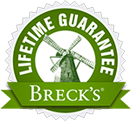Bees are dying out — their numbers have been on a decline since the late 1990s, but the present situation is graver than ever and can only be termed as an emergency. Bees are directly responsible for producing one out of every three morsels of food we consume, contributing to at least three quarters of the world’s food crops.
What’s killing bees?
It started with bees starting to behave unlike bees — not laying eggs, creating hives without a queen or with multiple queens. In addition, researchers have cited cases of worker bees collectively disappearing from bee colonies, leaving the queen and nurse bees to fend for the young bees and themselves. This strange phenomenon has been termed the Colony Collapse Disorder, and although disruptions such as these have happened throughout history, the decline of bee populations hasn’t let up within the timeframe allowed by typical population cycles. Scientists have discovered a number of reasons behind the fall of bees, including loss of habitat caused by urbanization, cultivation of non-native plants, the predominance of domesticated animals, rival insect species, widespread use of chemical insecticides (specifically Neonicotinoids) and very recently, a wing-deforming virus that shortens the bees’ lifespan.
How can you help?
While this alteration in the typical life cycle of bees is alarming, researchers are looking into ways that home farmers and gardeners can help to mitigate damage to bee colonies.
Provide them with nesting space: Leave a portion of sunny area uncultivated for the bees to build their nest on. You can erect a few wooden logs or bamboos to offer the bees a secure nesting site. Dead trees are one of the bees most preferred nesting sites. So if you have one on your property, leave it be for the bees.
Pick environmentally benign pest controls: Choose pesticides derived from natural ingredients.
Grow bee friendly plants to offer bees nourishment throughout the seasons. Iris, early snow glories, clematis, bleeding hearts, crocus, Grecian windflowers — bees have excellent taste when it comes to flowers, which gives you plenty of breathtaking varieties to choose from. Plan to include a few of bees’ favorites in your garden every season, for instance hyacinths and crocuses to feed the bees in spring, bee balm and hostas in summer; asters and sedums in fall.
Try and make room for a few native flowers, herbs, raspberries, blackberries, and trees to encourage bees’ consumption of native plans and flowers.



